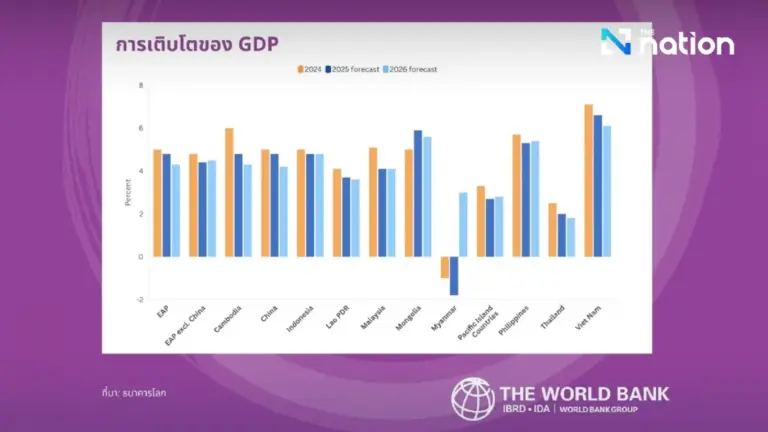The World Bank has downgraded its growth forecast for the East Asia and Pacific (EAP) region to 4.3% in 2026, down from 4.8% this year, citing global economic headwinds, rising debt, and uncertainty in trade and fiscal policy.
In its October 2025 East Asia and Pacific Economic Update, the bank said that while regional growth remains above the global average, momentum is slowing due to weakening demand, tightening trade conditions, and persistent structural challenges.
China, the region’s largest economy, is expected to decelerate from 4.8% to 4.2%, driven by reduced fiscal stimulus and growing public debt. Thailand and Indonesia are projected to grow between 1.6% and 4.8%, below their economic potential.
The report highlights growing pressure from trade tensions as the United States imposes new tariffs on Chinese and East Asian goods, reducing exports in key industries such as textiles in Cambodia, Myanmar, and Laos. Meanwhile, Thailand, Malaysia, and Vietnam remain relatively resilient due to stronger electronics and semiconductor sectors.
The World Bank’s economic model suggests that US tariffs could cut export values in some product categories by 30–50%, while stricter rules of origin may raise costs and reduce global supply-chain flexibility.
Images are for reference only.Images and contents gathered automatic from google or 3rd party sources.All rights on the images and contents are with their legal original owners.
